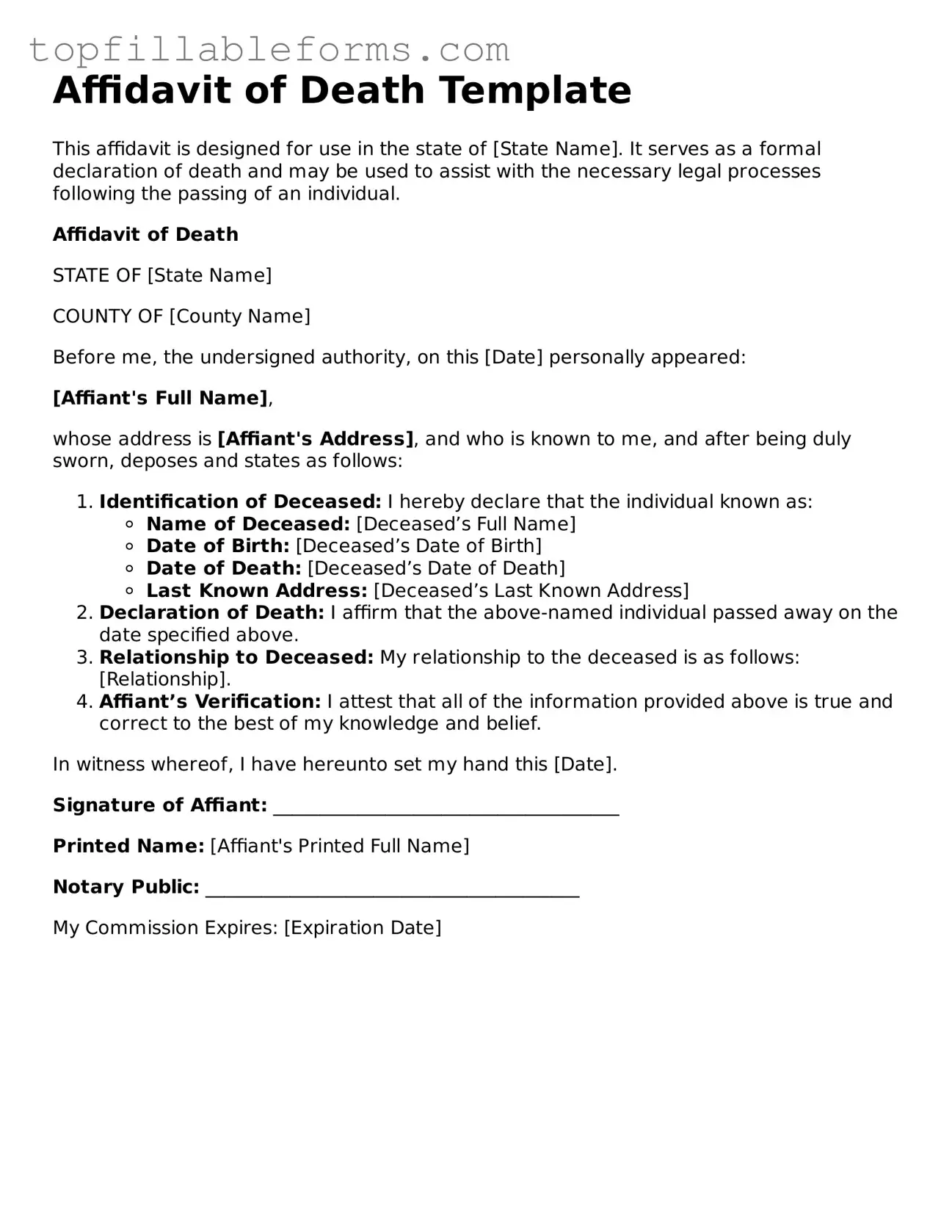Affidavit of Death Template
This affidavit is designed for use in the state of [State Name]. It serves as a formal declaration of death and may be used to assist with the necessary legal processes following the passing of an individual.
Affidavit of Death
STATE OF [State Name]
COUNTY OF [County Name]
Before me, the undersigned authority, on this [Date] personally appeared:
[Affiant's Full Name],
whose address is [Affiant's Address], and who is known to me, and after being duly sworn, deposes and states as follows:
- Identification of Deceased: I hereby declare that the individual known as:
- Name of Deceased: [Deceased’s Full Name]
- Date of Birth: [Deceased’s Date of Birth]
- Date of Death: [Deceased’s Date of Death]
- Last Known Address: [Deceased’s Last Known Address]
- Declaration of Death: I affirm that the above-named individual passed away on the date specified above.
- Relationship to Deceased: My relationship to the deceased is as follows: [Relationship].
- Affiant’s Verification: I attest that all of the information provided above is true and correct to the best of my knowledge and belief.
In witness whereof, I have hereunto set my hand this [Date].
Signature of Affiant: _____________________________________
Printed Name: [Affiant's Printed Full Name]
Notary Public: ________________________________________
My Commission Expires: [Expiration Date]
